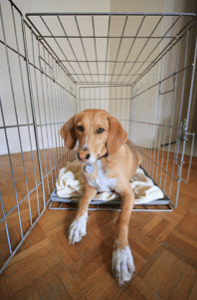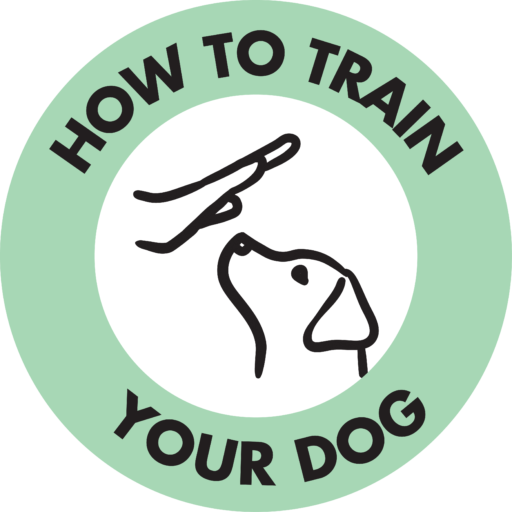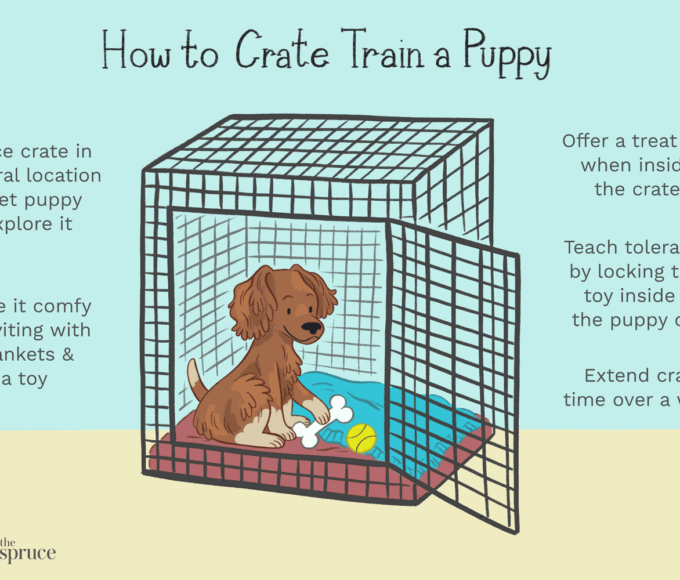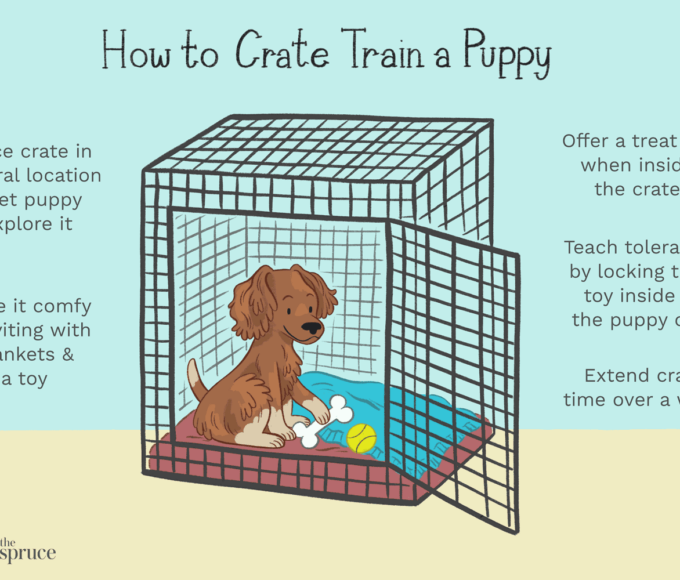Crate training an older dog differs slightly from crate training puppies but follows the same basic principles. It is important to note that older dogs may have already developed a few bad habits and you may need some time to eliminate them and overwrite with the good ones. That is why more patience and consistence is required when crate training an older dog.
Crate Training An Older Dog Step 1 – Purchasing The Right Crate
 First and maybe the most important part of crate training an older dog is the process of buying the crate. The best option is to go for a wire crate as it is more resistant to biting and chewing than the plastic one. Make sure you will also get a smooth floor so that your dog will be able to lie comfortably on it. The crate needs to be big enough for your dog to sit and turn around easily but not bigger than the sleeping pad you will put inside. If you go for a crate that’s too big your dog may use one of its corners corner as a toilet if forced to.
First and maybe the most important part of crate training an older dog is the process of buying the crate. The best option is to go for a wire crate as it is more resistant to biting and chewing than the plastic one. Make sure you will also get a smooth floor so that your dog will be able to lie comfortably on it. The crate needs to be big enough for your dog to sit and turn around easily but not bigger than the sleeping pad you will put inside. If you go for a crate that’s too big your dog may use one of its corners corner as a toilet if forced to.
Crate Training An Older Dog Step 2 – How To Make It A Cosy And Friendly Place?
While crate training an older dog you will also need to put inside it a heavy dish with water and some food as well as chewing toys and something that will remind the dog of you (old t-shirt would be perfect). Place the crate close to the main social area in your house so that the dog can always feel your presence and remember to move the crate to your bedroom when you go to sleep. That way you will boost the sense of security your dog should be developing and be able to control his physiological needs.
Crate Training An Older Dog Step 3 – How To Convince The Dog To Move In?
In order to begin the proper part of crate training an older dog – helping the dog to move in to his new home – you need to follow few easy steps. First, put some sort of a treat inside the crate. This can either be a snack or a chewing toy stuffed with food. Praise the dog as soon as he enters the crate and let him out, if he doesn’t want to stay inside.
Start putting his meals inside the crate regularly so that he can get used to it and, as soon as he lays down on his sleeping pad, slowly close the door while still praising the dog. Stay there with him and open the crate door after a while.
Next time he does that lock him inside and leave alone for a few minutes. Don’t come running if you hear him whining, you cannot reward such behavior because he will learn to use it against you in the future. Wait till he stops and then open the door and let him out. By using this method your pet should feel comfortable staying inside the crate within a week or so.
Is Crate Training An Older Dog Necessary?
Crate training an older dog is a great cure for majority of the dog related problems you may encounter. It speeds up toilet training, helps in eliminating undesired behaviors and keeps your pet out of trouble.




